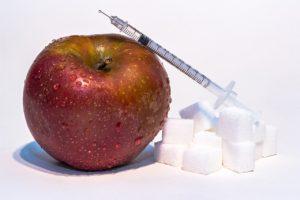Don’t let your type 1 or type 2 diabetes diagnosis keep you from riding! Cycling for diabetics can be a healthy part of your regular exercise regime with proper planning. Nearly 30 million Americans have diabetes, and the Center for Disease Control predicts that by 2050 as many as one in three American will be diagnosed with diabetes.
Because diabetes affects insulin and blood glucose levels, bicycling for diabetics requires proper precautions. Although this article will list several precautions you can take, it should not be considered medical advice. Always discuss your exercise regime with your physician.
If you have diabetes, your body cannot produce enough insulin, a natural hormone that controls blood sugar. Insulin regulates blood sugar levels by transporting sugars from foods into the cells. Without insulin, sugars remain in the bloodstream and can damage tissues. Pharmaceutical insulin can produce a similar process in the body, but insulin levels must be regulated based on foods and levels of activity.
For a free legal consultation,
call 1-844-242-9253
Risk factors for cycling with diabetes exist, but most physicians agree that the potential benefits exceed the risks for most. Many diabetics are overweight, and losing weight has been shown to reduce blood sugar levels. Cycling regularly helps with weight loss. In fact, any regular physical activity can play a role in managing diabetes.
Millions of Americans are at risk of developing type 2 diabetes. That risk can decrease through regular physical exercise, healthy eating, and weight loss. Numerous studies show that regular physical exercise, like bicycling, can reduce the symptoms and effects of diabetes for those already diagnosed.
Whether you have been diagnosed with type 1 diabetes or type 2 diabetes, most people can bicycle safely. But remember, before starting any new exercise regime, talk with your doctor.
Bicycling for Diabetics: Precautions
- First, meet with your physician and discuss your cycling schedule. He or she may have input on the best time of day or ride or how to fine-tune your cycling to work in tune with your insulin and keep blood sugar levels regulated. Have your physician check your blood pressure and heart rate. It is also good for anyone, especially those people with a chronic medical issue like diabetes, to monitor their blood pressure and pulse regularly.
- Use proper equipment to monitor your blood sugar levels when you ride. Some avid cyclists turn to a continuous glucose monitor (CGM) to monitor blood sugar levels while on the go. If you use a glucose pump, you can even find a CGM that will work together with your pump to regular your insulin levels. Even if you choose to go the old-fashioned way, blood glucose monitors have come a long way. Compact monitors can easily be taken with you while you bike to check your levels during periods of exercise.
- Recognize your body’s warning signs. When your blood sugar levels are too high or too low, you may feel “funny.” Headaches, drowsiness, nausea, hunger, thirst, or blurred vision might indicate high blood sugar levels. Low blood sugar levels may present with shaking, a rapid heartbeat, anxiety, sweating, dizziness, and weakness. Recognize these symptoms and take action when they occur.
- Remain properly fueled and hydrated. Staying properly fueled begins BEFORE you ride. If you take insulin, the Mayo Clinic recommends that you test your blood sugar 30 minutes before exercise. If your blood sugar is lower than 100 mg/dL, your blood sugar may be too low. Before you exercise, eat a small snack with good carbohydrates. If your blood sugar is between 100 and 250 mg/dL, you’re in good shape and ready to ride. If your blood sugar is 250 mg/dL or higher, be cautious and consider testing your urine for ketones. You may need to postpone your ride until your levels are in a safe range.
- Monitor your blood sugar during exercise. A CGM comes in handy to track your sugar levels during exercise. If you do not have one, you need to learn how to monitor your blood sugar during periods of exercise. Track your blood sugar before, during, and after exercise, and pay close attention to the signals your body is sending. It’s important to keep your diabetic supplies with you while exercising.
- Journal, journal, journal! Journaling your blood sugar, insulin, foods eaten, and exercise is a great way to learn how your blood sugar levels respond in different situations. This is also a convenient way to track your blood sugar levels to discuss with your physician.
Click to contact our personal injury lawyers today
Whether you want to learn more about bicycling for diabetics, safe biking skills, or what to do if you are in a biking accident, subscribe to our newsletter below to stay abreast of all of our cycling articles!
Call or text 1-844-242-9253 or complete a Free Case Evaluation form


